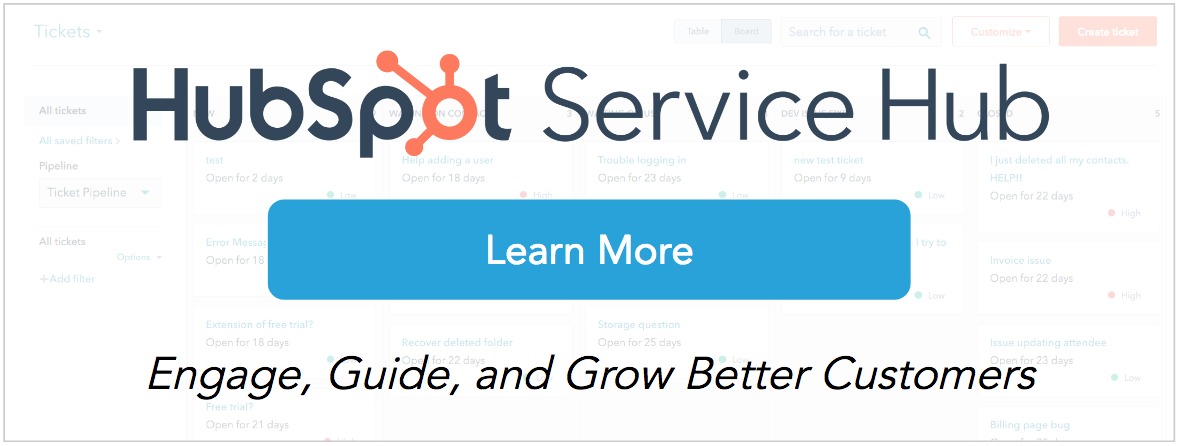I vividly remember the first rule of sales our chief investor and mentor told us in the early days of building our product. The first rule, he said, is to listen.
If you start selling your prospect on what you can offer when you haven't even bothered to understand their needs, you're going to lose. Ask as many questions as you can before you try to sell them anything.
Listening is the first rule of product, too.
A product that is built, maintained, and grown without asking customers questions is built on sand. A product, on the other hand, that is designed and managed by a customer-centric team has a rock-solid foundation.
How, as a product team, can you be customer-centric? How can you listen above all else? The first step is ensuring that everyone on the team is exposed to customer voices.
What is customer-centric design?
Customer-centric design is the process of building your product or service based on the wants, needs, and challenges of your customers.
These voices arrive through many channels. Passive means like web usage analytics or session replay technologies record the echoes of customers' wants and needs by aggregating behaviors and pathways into fuller pictures. The patterns that emerge can indicate a great deal about what customers are doing, with some inference.
Being truly customer-centric, however, also requires more active means of listening. Methods like usability testing, surveys, and customer conversations are the rainwaters that fertilize a healthy product.
Of course, these modes of observation don't all happen in one place; customer conversations, for example, are happening all the time with sales staff, support personnel, social media managers, as well as members of the product team. Communications come in through emails and contact forms. Marketing and support may be running surveys. UX researchers likely have a usability testing regimen.
A deluge of rain that falls on the mountains won't feed the fields below without a network of spillways and runoff channels to carry it down and fill the reservoirs. Likewise, high levels of customer interaction only help create better products if channels are in place to carry insights to the relevant actors and stakeholders.
The 5 Rules of Customer-Centric Design
1. Fill the customer knowledge reservoirs.
My friend Anup Surendran, VP of Product at QuestionPro, considers accountability one of the core traits of a customer-centric organization. In other words, every process should be accountable to one employee or team.
For example, salespeople are accountable for sending customer queries on to support. Support staff are accountable for funneling the contents of customer conversations to the right product person. PMs are accountable for deciding which pieces of feedback will be acted upon and when. Designers are accountable for crafting solutions, engineers for implementing them, and PMs for communicating progress back to the customers.
What does all this mean? It's hard for a product team to build up a reservoir of customer knowledge in an organization that's not programmed to be customer-centric. It goes the other way, too: if the product builders aren't listening, the product won't sell.
2. Use customer knowledge to be customer-centric.
Let's suppose your organization has developed a healthy, reliable system for collecting and passing on customer feedback -- or at least that some amount of listening is happening. How does this information reservoir relate to the product roadmap?
A customer-centric product team is attentive to the voice of the customer at every stage of product development: before you build, while you build, and after you build.
Customer needs and the customer experience should be a big factor in decisions about what new features to implement, which pages and flows to redesign, or where to expand and push your vision forward.
Those decisions will be the answers to questions like: What do users wish they could do? What are they dissatisfied with? What will provide the most value to them? And the answers will come from things your team has heard via all the different channels for customer voices.
Sometimes it's the same complaint that 50 people sent through the feedback funnel. Sometimes it's half a dozen different feature requests that are all different ways to solve the same problem, and you find that common thread and identify the smartest way to solve it for everyone. Sometimes, it's a bulleted list of very specific things that a high-value client sends over and wants you to make.
Of course, you can't, and shouldn't, do all of them -- and being customer-centric doesn't mean bending over backward to fulfill every single request your customers make.
You open the funnel up for every idea, you listen to everybody, and then you pick out the ones you're going to pursue and in what order. For us, prioritizing the many product possibilities for our roadmap is a function of questions such as:
What customer segment does this idea serve?
Identify the different segments of your customer base. These may be based on motivations, demographics, industries, or other divisions that are meaningful for your organization. Which segment(s) will this idea be useful for? How large is this segment? How critical are they to the business, and how great is their need for this feature?
How does the idea impact the rest of the customer base?
Does making a change or implementing something new affect the platform in any way for other customers? Does it add unnecessary complication? Will they have any use for this feature, perhaps in a different manner from the primary segment? Are there ways you could approach this idea that would make it relevant to a broader swath of customers?
Does it align with our vision and business priorities?
Even a feature that many users ask about may not be a good fit for your organization. You can't lose sight of what exactly it is that you do and who you are as an organization. There are times when you have to say no.
3. Prioritize the roadmap for the users and the business.
Once you've cast the net and created a running list of product possibilities, how do you tackle them in a way that's customer-centric and business-sensible? There's a formula we've used at TryMyUI from time to time for weighing long lists of ideas and picking which ones to prioritize:
(Value / Complexity) x Necessity2
For every idea, we assign a score from 1 to 10 for each variable, then calculate a total score to loosely rank all of the ideas. Here's what the variables mean:
Value: usefulness, breadth of affect, marketability
Similar to marketability; this number hinges mainly on (A) how many users it affects and (B) how much value this feature adds for the customers and/or the company.
Complexity: difficulty, time commitment, opportunity cost
Represents how difficult the feature will be to build, encompassing factors like how many new elements or flows are required, how tricky they will be to design and code, and how long it will all take to complete.
Necessity: urgency, centrality to the experience
How badly it is needed, from nice-to-have to must-have. A feature, upgrade, or fix that will remedy an active problem, especially an urgent one that's causing actual losses, gets a high score. Cool ideas that aren't essential to the customer experience get a lower number.
4. Solve problems for the user while you build.
The key phrase in this phase is "user experience design." During the implementation process, the customer-centric team focuses on designing and delivering a user experience that is intuitive and easy for the customer to use.
User experience design, really, is just design reframed. It's a term that puts the emphasis on solving problems for the user, and a reminder that design is not just making things pretty -- it's a method of crafting a holistic beginning-to-end experience that accounts for every detail of the user's journey.
With solid design practices, empathy, iteration, and some user research, a talented product team can put together a smart solution with a great UX.
Listening need not stop here, though. In fact, as early as the ideation stage there are valuable viewpoints your customers can contribute. As the users, they may have ideas for how to address the problems they're facing. Ask them. When you combine customer ideation with your own team's brainstorming, you get "ideas having sex" and creating something better.
Once, we were redesigning a checkout page on our website and sent the mockup to a few customers. Most of our customers are themselves UX Designers, but we were still surprised when one sent us back their own mockup of how they envisioned the page! We used their ideas, and others' feedback, to inform our final design.
Throughout the process, feedback helps. After drawing up wireframes or prototypes, test them with usability testing or by showing them to actual customers, and see what they say. It doesn't take long to get a few people's opinions, and the benefits are disproportionate.
5. Communicate changes to the customer after you've built.
After you're done implementing a new feature request, someone should be accountable for communicating the changes to the customer. Communication is an important way to establish trust, and transparency about the delivery timeline is key here. Fast turnaround on customers' feature requests goes a long way -- but even a slower turnaround will garner goodwill as long as there is communication.
Of course, "live" doesn't really mean "done." More testing and new design iterations will continue to improve the utility and usability of the feature over time.
How to be a Lovable Brand
Anup uses a product framework called OPTIMAL, an acronym for the seven components of brand lovability: Observation, Purpose, Transparency, Innovation, Motivation, Accountability, and lastly, Lovability. Creating experiences that users love is the ultimate goal of this framework.
Do customers love your brand? Do they love their experiences with your platform and organization? How does one attempt to gauge lovability, anyways?
Take all of the touchpoints between a user and your organization. A touchpoint is any interaction with your brand -- for example, visiting the website, reading a blog post, receiving a marketing email, talking to a sales representative, signing up for an account. In each instance, the user gets to know you a little more. Lovability is the sum total of every experience across every touchpoint.
Therefore, good sales follow-through, helpfully personalized marketing (but not too creepy), an engaging and well-written blog, easy-to-use features and tools: all these improve the customer experience and make a brand more lovable. As Anup put it, lovability requires "a little element of going beyond. A little element of surprise. A little element of 'This is more than what I expected.'"
What if the sales demo was informative and convincing, but the experience on the web app was frustrating? What do these touchpoints sum up to? And what if the subsequent call with support was helpful and restorative? In the end, will that customer love your brand? What about every other possible permutation?
The deciding factor is this: whether or not you helped them solve their problem. It is possible to be loved when a piece of the puzzle is missing. However, this is only true if you are still able to be a bridge between the customer and their goal. That's why the product is the most important part of lovability, and why having a customer-centric product strategy is so critical to success. The product is the piece of the puzzle that solves the user's problem. That's the value you're offering the market.
Customer Success




![How To Write a CSM Resume [+ Free Templates]](https://53.fs1.hubspotusercontent-na1.net/hubfs/53/customer-success-manager-resume-1-20241031-2293336.webp)







